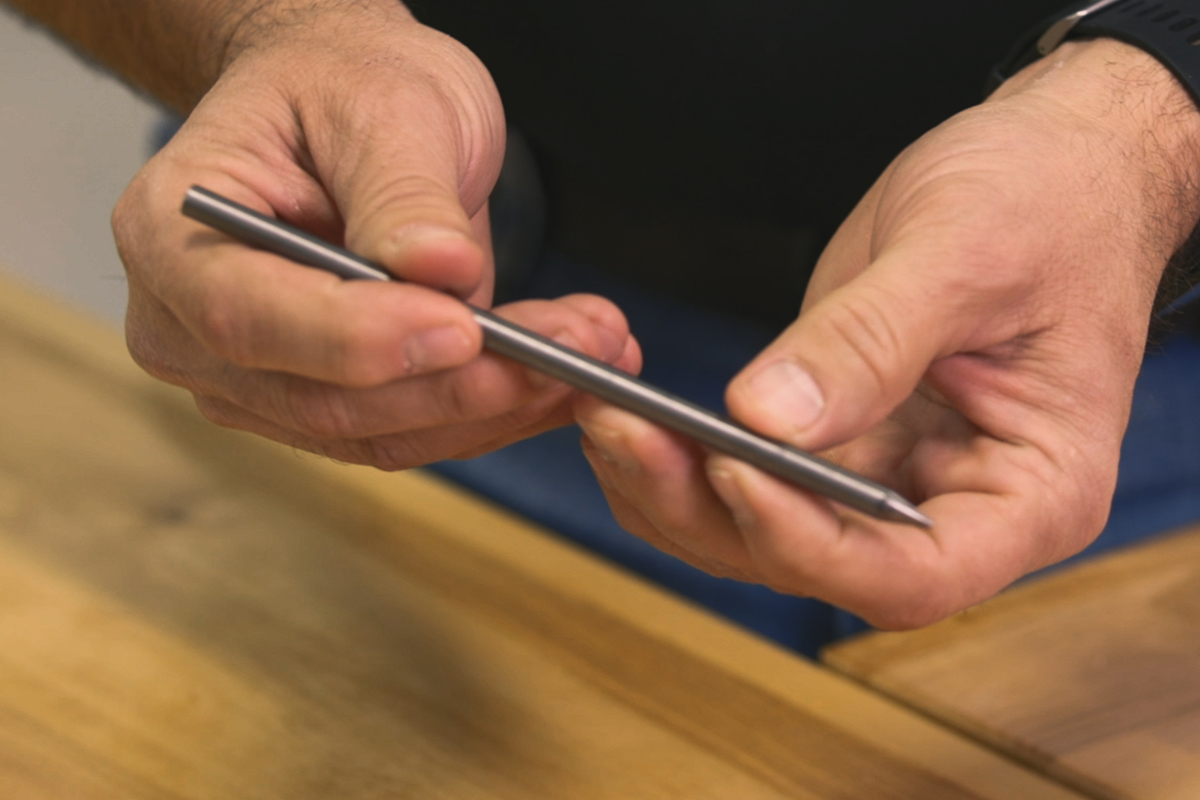

Ask the Experts: How to Choose the Proper Electrode
By Grainger Editorial Staff 5/9/19
Choosing an electrode for TIG welding is a matter of striking the right balance between cost, ease of use, and performance. The right electrode for the job will depend on the material you’re working with and the amount of current you’ll be using. According to metalworking specialist Mark Fine, each electrode filler brings a unique set of strengths to the welding job:
- Pure Tungsten: Tungsten is the main ingredient in every TIG electrode. According to electrode manufacturer Miller Electric, tungsten’s high melting temperature of 3,410 degrees Celsius makes it the only metal that can withstand the extreme temperatures inside a welding arc.
Pure tungsten electrodes are less expensive than their alloyed counterparts, but the metal offers relatively poor conductive properties. Pure tungsten electrodes can have difficulty starting and maintaining an arc using DC current, and the material generates quite a bit of resistance heat. The high operating temperature of pure tungsten reduces the electrode’s lifespan and can potentially create issues with arc wandering and spitting. - 2% Thoriated Tungsten: This durable, welder-friendly alloy is the most common filler material for TIG electrodes. Blending a trace of thorium into tungsten greatly improves the metal’s conductive properties. Electrodes made of thoriated tungsten are much more willing to arc than pure tungsten, making them more reliable for low current and DC applications. This filler material can also maintain an arc well below the alloy’s melting temperature, greatly extending the electrode’s lifespan.
Aside from cost, thoriated tungsten’s biggest drawback is the element’s mild radioactivity. Two percent thoriated tungsten electrodes contain between 1.7 and 2.2% thorium. While radiation exposure during welding is negligible, regrinding the electrode tip can create a dust hazard. - 2% Ceriated Tungsten: Ceriated tungsten is a great conductor, best suited to low-current DC welding. The ceriated electrode will start and maintain an arc at low amperages, which makes it ideal for jobs involving thin sheet metal or fusing delicate pieces. Ceriated tungsten is not, however, suited for higher amperages, which can cause oxides to migrate to the electrode’s tip.
- 1.5% Lanthanated Tungsten: These electrodes contain between 1.3 and 1.7 percent lanthanum, a soft rare earth metal. The alloy makes an excellent all-around electrode. Lanthanated tungsten produces a stable, easily reignited arc; it can be used across a range of current loads for both AC and DC applications, and the material offers a relatively low burnoff rate.
Lanthanated tungsten electrodes can also maintain a sharpened point for square-wave AC welding. - Zirconiated Tungsten: Tungsten alloyed with zirconium is ideal if you’re concerned about contamination. Zirconiated tungsten produces a stable arc and the electrode resists spitting, reducing the risk of contaminating the weld with tungsten. The alloy’s biggest drawback is that it can only be used in AC applications—zirconiated tungsten is not suitable for direct current welding.
Shaping the Tip: Most TIG electrodes ship as rods with a square tip, leaving it to you to select the type of tip that is best suited to the job. The tip’s shape will depend on the type and amount of current you will be using.
Balled Tip: Applying sine-wave AC current to the electrode will naturally form the tip of the electrode into a ball, the ideal shape for generating an AC arc. Although the tip adopts this shape naturally when current is flowing, be careful to limit the size of the ball. If it is allowed to grow wider than 1.5 times the diameter of the rod, the arc will become unstable and the electrode may shed its tip, contaminating your weld.
Pointed Tip: Welding with DC current requires grinding the electrode into a pointed or truncated tip. The sharpness of the tip will determine width and penetration of the weld—steeper angles produce greater weld penetration and a narrower bead.
To grind the electrode into a point, you will need a grinding wheel designed for use with tungsten. To prevent contamination, the grinding wheel should be reserved for use only on electrodes. When shaping the point, grind along the length of the electrode, not perpendicular. Any ridges running across the tapered face can cause arc wandering and instability.
Truncated Tip: High DC current can blow a too-sharp point off the electrode, contaminating the weld. For high-current applications, you’ll want to leave a blunt, truncated tip. This spreads out the arcing surface, protecting the electrode. To create a truncated tip, first grind the electrode into a sharpened point, then remove the tip to create 0.01 to 0.03 inch wide blunt end.
Choosing an electrode with the right filler material and shape will largely depend on the specifics of the work to be done. The equipment you’re working with and the material you’re welding will determine which type of electrode is best suited for the job.
Mark Fine earned his B.S. in Mechanical Engineering from the University of Tennessee, and has worked as a manufacturing engineer and tooling engineer in the steel and automotive industries for much of his career. Mark has worked extensively with the production side of the metalworking industry, and over the past 25 years has worked to bring innovations in metalworking to manufacturing.
![]()
The information contained in this article is intended for general information purposes only and is based on information available as of the initial date of publication. No representation is made that the information or references are complete or remain current. This article is not a substitute for review of current applicable government regulations, industry standards, or other standards specific to your business and/or activities and should not be construed as legal advice or opinion. Readers with specific questions should refer to the applicable standards or consult with an attorney.






